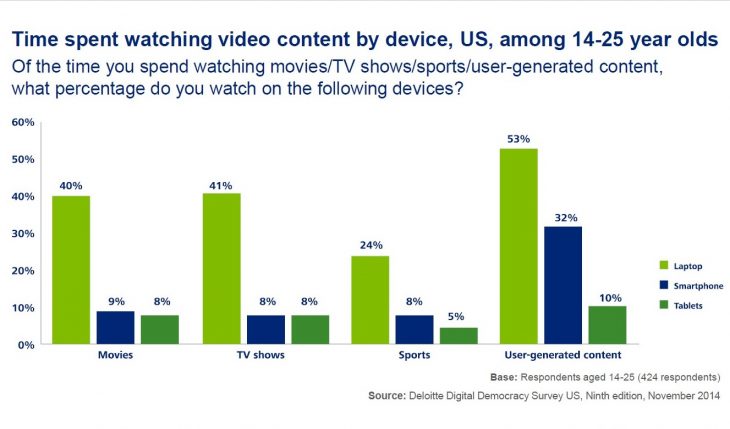
WHISTLER – One of the world’s top technology, media and telecommunications trends forecasters, Deloitte Canada’s Duncan Stewart, spent an hour on stage Tuesday urging CCSA delegates to try and view all tech hype with a skeptic’s eye – and use data instead.
He identified 3D printers, e-readers and virtual reality headsets as products whose results in the marketplace have nowhere near matched the media hysteria around them.
Turns out people don’t want little mills in their homes making do-dads out of plastic or whatever. Turns out humans still like physical books (e-reader sales have plateaued and print book sales have edged up) and that “27% of  millennials carry around a book they’re not even reading because they think it makes them look smarter,” he said. As for VR? “That will probably be the most overhyped technology you will ever encounter in your life” because, a) people like to game and watch TV together, and b) VR is an intense experience. People like riding roller coasters once in a while, said Stewart, but to do it nonstop is impossible. “And remember, people wouldn’t even wear 15-gram 3DTV glasses.”
millennials carry around a book they’re not even reading because they think it makes them look smarter,” he said. As for VR? “That will probably be the most overhyped technology you will ever encounter in your life” because, a) people like to game and watch TV together, and b) VR is an intense experience. People like riding roller coasters once in a while, said Stewart, but to do it nonstop is impossible. “And remember, people wouldn’t even wear 15-gram 3DTV glasses.”
The hype comes from companies which have an economic incentive to build such mania around their product and product segment and Deloitte, he pointed out, just looks at the data because: “I don’t care,” Stewart added, explaining he’s just revealing the data and the trends to which it points. All the trends.
For example, while marketers and many others love to say things like mobile is king or mobile is eating the world, Stewart urged delegates to pump the brakes on that thinking. Yes, people love their smart phones, but no, sales of laptops or TVs have not plummeted as a result.
PCs are still an incredibly important market segment. Around the world, laptop and smartphone access are almost neck-and-neck among the 18-24 year old segment (see chart), despite media hype which almost solely focuses on kids and their smartphones, 85% of millennials have a smartphone, globally, while 95% have a laptop or PC “and they value it second only to the device which seems welded to their bodies,” said Stewart.
“And PCs suck down four to 16 times as much data as a small device,” he said to the room full of network operators. “That really matters to those providing the fixed data pipe to the home.”
So what are young consumers doing with their laptops (besides creating content)? It’s becoming their primary screen for watching long form content, said Stewart. “Laptops are to some extent becoming the TV set for this generation (14-25 year olds).”
Stewart also warned delegates to be wary of all the cord cutting hype. Yes, it’s happening, but not at the hair-on-fire rate some media stories would lead people to believe. U.S. pay-TV households have dropped from 100.3 million in 2010 to an estimated 98.1 million by the end of this year, his research shows. Even when factoring in all the new households which are not signing on as pay-TV subscribers, the level of penetration has only fallen 4.6% since 2010, he added.
Also, while Wall Street and its media panic about ESPN’s subscriber losses, revenues at the world’s biggest sports  channel have actually grown 17% in the past three years (see chart). Hardly a tale of woe. Yes, ESPN has lost 10% of its subscribers, but it was the 10% who weren’t ever watching the channel anyway, because they aren’t sports fans. “They got rid of their worst 10% of their customers,” said Stewart.
channel have actually grown 17% in the past three years (see chart). Hardly a tale of woe. Yes, ESPN has lost 10% of its subscribers, but it was the 10% who weren’t ever watching the channel anyway, because they aren’t sports fans. “They got rid of their worst 10% of their customers,” said Stewart.
However (again), that doesn’t mean all is well or that all the negativity is a case of too much hype. “We are losing 18-24 year olds,” he added. “They are used to shooting a zombie every thirteen seconds” and a growing cohort of them don’t engage with traditional sports on TV. While 86% of that group watch sports (making it a huge group), it used to be 96%.
Football in particular is hurting – perhaps because it hurts. Stewart’s data shows 43% of 18-24 year olds don’t follow the NFL at all. “Friday Night Lights is getting to be a smaller thing because parents don’t like their kids getting their lights knocked out,” he speculated.





